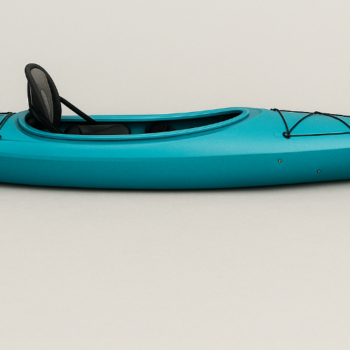Discover
Break Wall Environments
Australian Break Wall Environments
Australian break walls are artificial structures built along the coast to protect harbours, marinas, and other coastal developments from the effects of waves and currents. Break walls are typically constructed of concrete or rock and go out into the ocean at a perpendicular angle to the shoreline.
Break walls provide a unique habitat for a variety of plant and animal species. The structure of the wall provides shelter and protection from wave energy, creating a relatively calm environment behind the wall. This can provide a habitat for a range of marine organisms, such as seaweeds, barnacles, and other filter-feeding invertebrates.
The calm water created by break walls can also provide a nursery habitat for juvenile fish and other small organisms, which use the area as a refuge from predators. This can make break walls important areas for recreational fishing.
However, break walls can also have negative impacts on coastal environments. They can alter natural sediment transport patterns and disrupt the movement of sand along the coast, leading to erosion and other issues. Break walls can also act as barriers to the movement of marine animals, which can have implications for their survival and reproduction.
Break wall environments provide complex habitats for various plant and animal species and are important to coastal ecosystems. Management efforts are needed to ensure that the impacts of break walls are minimised, and that their potential adverse effects are addressed to maintain the health and sustainability of coastal environments.
Quick Facts
- Break walls are often referred to as “breakwaters”, “sea walls”, “rock walls”, “groyne structures”, “breaks” or “jetty”.
- Common materials used in constructing break walls in Australia include rocks, concrete blocks, steel sheet piles, or gabions (wire baskets filled with rocks).
- Some break walls have historical significance, dating back to the early days of coastal settlement in Australia. Examples include Macquarie Break Wall, Busselton Jetty, Semaphore Jetty, San Remo Jetty, and Australia’s oldest break wall, the Fremantle Harbour Western Breakwater (1890)

Exploring Break Walls
Break walls are a great place to explore, offering a dynamic and fascinating interface between land and sea. These walls provide a unique opportunity to experience the power and beauty of the ocean up close. The rocks and walls that make up these structures provide a distinctive habitat for various marine life, from the colourful creatures that inhabit the rock pools at the base of the wall to the fish that can be caught from the top. Below are different activities to try.
- Admire the stunning coastline views and watch the waves crashing against the rocks from the top of the break wall.
- Explore the fascinating ecosystem of the rock pools at the base of the wall, with colorful anemones, starfish, and crabs hiding in the crevices.
- Try your luck fishing from the break wall and catch a variety of species such as bream, snapper, tailor, jewfish, kingfish and flathead.
- Spot different marine life, such as dolphins, whales, and sea birds, that are often attracted to break walls.
- Stroll along the break wall and admire the ocean views for a more leisurely activity. Enjoy beautiful sunsets and sunrises.
Exploring break walls also provides a chance to learn about their function in protecting harbours, marinas, and beaches from the powerful waves of the open ocean. Overall, break walls offer a range of activities for visitors to enjoy, from fishing and beachcombing to scenic walks and wildlife watching.
Search the Australian
Fish & Marine Life Database
Australian Fish & Marine Species Identification – Freshwater & Saltwater Fish, Sharks, Rays and Invertebrates of Australia.

What are you looking for?
Australia is full of marine life. Discover its incredible diversity by exploring its different species below.

Crustaceans

Reef Fish

Sharks

Invertebrates

Rays

Jellyfish
Explore Other Environments
Australia’s aquatic environments are as diverse as its landscapes, ranging from iconic beaches to tranquil mangroves, estuaries, to fresh and saltwater lakes. Learn more about these diverse habitats.
Lake
Sandflat
Rock pool
Reef
Beach
Ocean rocks
Mangrove
Estuary
Discover More
There’s something for everyone. Dive into our resource library to learn fun facts and get information on everything marine. All your Australian marine life and lifestyle resource in one place!

Buying A Jet Ski: Types, Prices & Tips To Avoid Mistakes
Many People Get It Wrong: Here’s What To Know About Jet Skis. Owning a jet ski opens up a world of adventure —...

Buying a Kayak or Canoe - Get it Right & Avoid Costly Mistakes
Looking to buy a kayak or canoe? Here's what to know. Kayaks and canoes unlock some of the best paddling...

Inflatable Boats & RIBs: Everything You Need to Know Before You Buy
Looking to buy an inflatable or RIB? Here's what to know. Whether you're after a compact paddle dinghy for calm...

Murray Cod Lures and Baits: Catch More Cod With These Proven Winners
Top Murray Cod baits, backed by experts & seasoned anglers. Murray cod (Maccullochella peelii) are incredible...

The Ideal Setup for Trout Fishing in Australia: A Complete Guide
Get Geared Up - Dialling In Your Trout Fishing Setup Trout fishing offers a peaceful escape and a thrilling...

Bait Jig Rig & Variations
Bait jig rigs represent a crucial piece of tackle for the angling world, blending the art of lure design with the...

Running Sinker Rig & Variations
The running sinker rig, also known as the ball sinker rig, is an extremely popular and easy to create rig. There...

Boat Motor Financing: Inboard & Outboard Motor Loans
Boat Motor Financing: Inboard & Outboard Motor Loans New or used boat motor loans to power or...

